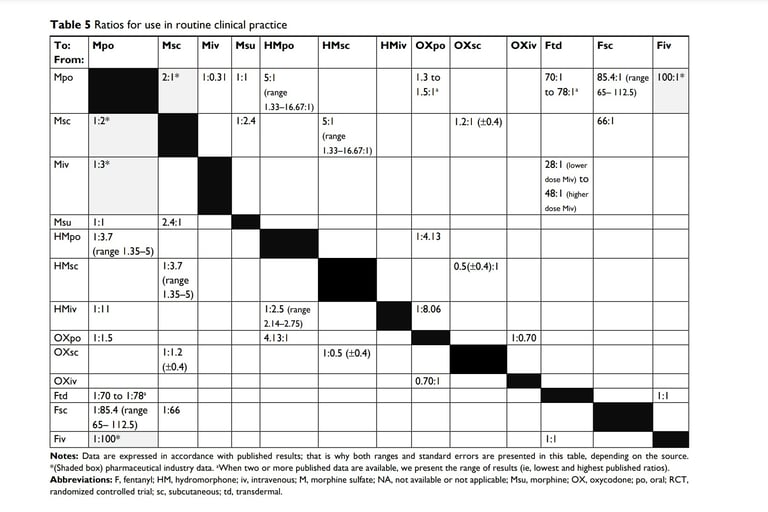Opioid rotation is defined as switching from one opioid to another or as changing an opioid’s administration route. Opioid change can be proposed in case of opioid's side effects, such as nausea, vomiting, constipation, acute urinary retention, myoclonus, respiratory depression, sedation, and cognitive impairment (including hallucinations, nightmares, agitation) or uncontrol pain
Few limitation with equianalgesia ratio:
The most reliable method for ratio calculation is based on the evaluation of pain after a single injection of an opioid. In general, this ratio is calculated in a postsurgical setting, where patients are usually opioid-naïve. However, this situation does not match everyday practice in cancer pain management, where the patients are rarely opioidnaïve and long-term treatment is necessary.
Equianalgesic ratios proposed in the literature are median values. So do not always confer reliable equivalence
The published equianalgesic ratios are often derived from pharmaceutical industry data and have not been confirmed by clinical trials or studies of routine clinical practice.


